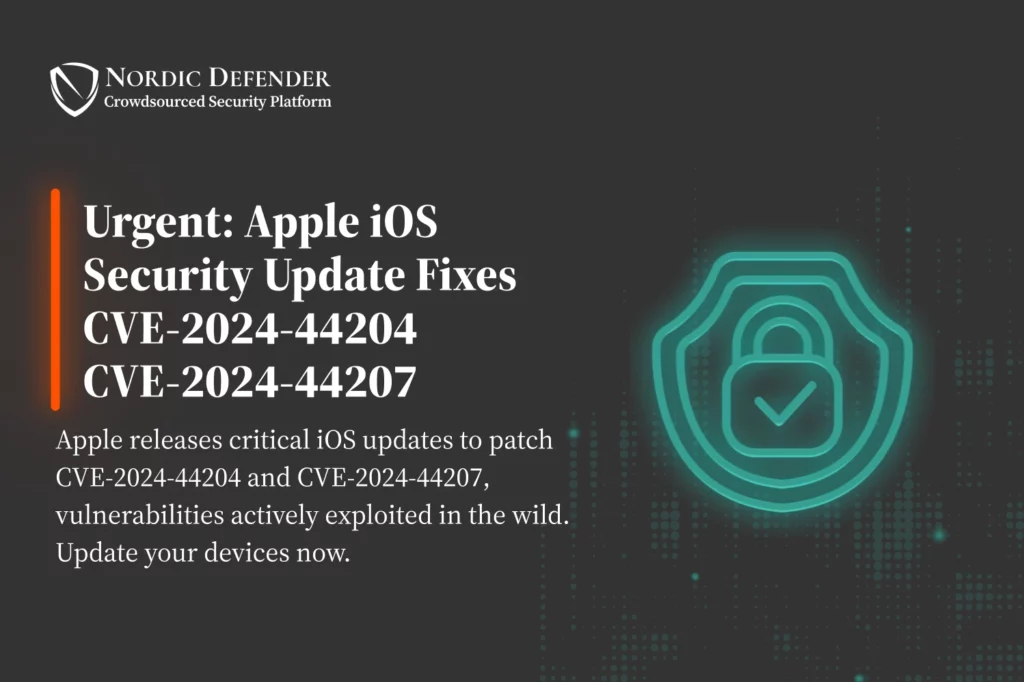Apple has issued urgent updates for iOS and iPadOS, targeting two high-risk vulnerabilities—CVE-2023-42824 and CVE-2023-5217. These vulnerabilities are actively being exploited in the wild, allowing attackers to take control of affected devices, and further heightening the risks for both personal and corporate users. This underscores the importance of timely updates in an ever-evolving cybersecurity landscape.
A Closer Look at the Vulnerabilities: CVE-2023-42824 and CVE-2023-5217
The first flaw, CVE-2023-42824, relates to the kernel, the core part of the operating system that has the highest level of privileges. This vulnerability allows attackers to execute arbitrary code with kernel privileges, which could result in an attacker taking full control of the device. Essentially, this would allow a cybercriminal to manipulate key functionalities, including installing malware, altering system configurations, or even spying on users’ activities undetected.
The second vulnerability, CVE-2023-5217, affects WebKit, the engine that powers Apple’s Safari browser. This vulnerability enables remote code execution (RCE) when users visit maliciously crafted websites. Since WebKit is used not only by Safari but also by other applications, this flaw amplifies the attack surface across multiple apps, creating an entry point for attackers looking to deploy malware or steal sensitive data.
The critical nature of these vulnerabilities should not be underestimated. With the exploitation already in progress, the potential for harm spans from targeted phishing campaigns to corporate espionage.
The Role of Zero-Day Exploits in Modern Cybercrime
Zero-day vulnerabilities, like those found in these Apple devices, are particularly valuable to cybercriminals because they offer an opportunity to exploit systems before the public or even developers are aware of them. Zero-days are typically weaponized in advanced persistent threat (APT) campaigns, where attackers aim to breach networks, siphon off data, or gain long-term control over critical systems.
For instance, the vulnerability in the WebKit engine (CVE-2023-5217) opens the door to browser-based attacks that could easily bypass traditional perimeter security controls. Users simply need to visit a compromised website, at which point the vulnerability could be exploited to plant malware or harvest sensitive data. The kernel vulnerability (CVE-2023-42824), on the other hand, offers attackers deeper access to the system, bypassing many of the defensive layers that are typically in place, such as sandboxing or app isolation.
Corporate and Enterprise Risks: Beyond Individual Devices
While it is crucial for individual users to update their devices immediately, enterprises need to take a more structured approach to mitigate these risks. Mobile devices, particularly those used in the workplace, are gateways into corporate networks. If a device is compromised due to an unpatched vulnerability, it could lead to lateral movement within the network, unauthorized access to corporate resources, and data exfiltration. The risks extend beyond just personal privacy and touch upon regulatory compliance, data integrity, and business continuity.
Businesses using Mobile Device Management (MDM) systems should prioritize pushing the updates across all corporate devices. Additionally, endpoint security solutions should be reinforced with behavioral monitoring, as attackers exploiting these flaws may attempt to evade detection by obfuscating their presence.
Steps Toward Mitigation: What You Can Do Now
The first step toward protection is updating all devices immediately. This applies to all users—individuals, corporate employees, and executives—who use iPhones, iPads, or Apple devices powered by these systems. Delayed updates create opportunities for exploitation.
Beyond updating, here are other measures that can bolster your defenses:
- Implement Device Auditing: Regularly audit devices to ensure they are running the latest patches and security updates.
- Use Advanced Endpoint Security: Employ advanced security solutions that provide continuous monitoring and real-time threat detection, especially on devices that access corporate resources.
- Review Access Policies: Ensure that least-privilege principles are applied, especially for employees using personal devices to access work data. Limiting access helps reduce the impact of any potential breach.
- Zero-Trust Framework: Consider adopting a zero-trust architecture where no device or user is trusted by default. Authentication and access controls are verified continuously, even after a user has logged in.
- Educate Users About Phishing: Phishing remains one of the primary vectors through which attackers deploy payloads to exploit vulnerabilities like CVE-2023-5217. Train employees to recognize phishing tactics and avoid suspicious links or attachments.
A Broader Perspective: Apple’s Role in the Ongoing Cybersecurity Battle
Apple’s response to these zero-day vulnerabilities has been swift, but the rapid escalation of these attacks speaks to broader trends in cybersecurity. Attackers are becoming increasingly sophisticated, often using well-crafted, social-engineering tactics to compromise systems before a patch is available. The fact that these vulnerabilities are being actively exploited should be a wake-up call, pushing both individuals and enterprises to reconsider their approach to device management and security.
From a strategic standpoint, cybersecurity professionals should aim to adopt a more holistic approach to mitigating risks. This includes not only immediate patching but also improving threat intelligence, enhancing internal detection mechanisms, and ensuring all levels of an organization are prepared to respond to security breaches.
In a world where critical vulnerabilities can emerge overnight, it’s essential to maintain a proactive security posture, investing in both technology and awareness to safeguard digital assets.
